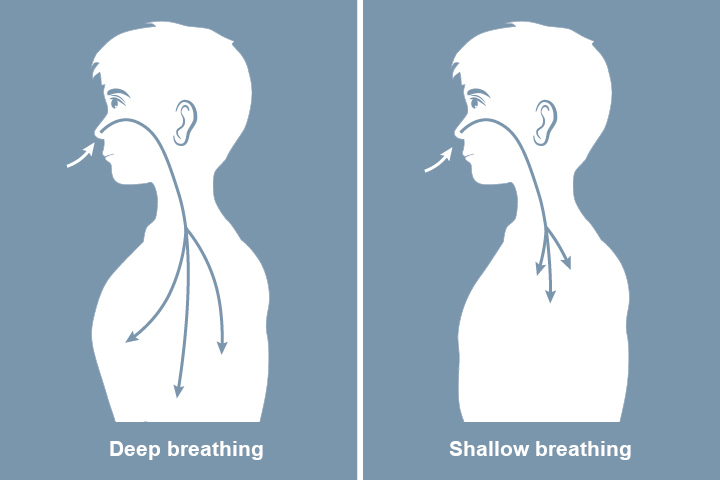Thursday, 29. December 2022
It’s a familiar scenario: You are sitting on the train, in the cinema or in the restaurant and you are suddenly overcome by an urge to cough. Many people with respiratory diseases find this situation unpleasant and embarrassing.
An urge to cough sometimes starts spontaneously for no apparent reason. Sometimes it happens because of exertion, talking fast, excitement or panic, situations where you breath in too fast and shallow – or during inhalation and respiratory physiotherapy. In patients who have chronically hyperventilated lungs, the damaged lung tissue can sustain even more harm from excess coughing. What should you do to avoid coughing?
There are several ways to suppress an urge to cough and mitigate a coughing fit. Here we introduce you to the “shallow breathing” technique. Breathing fast and shallow can help supress the urge to cough and manage a coughing fit.
Shallow breathing is not normally recommended, even if it sometimes happens in people with lung disease or after exertion because it is the only possible way to breathe. For this reason people with lung disease (and everyone else too) should ensure they breathe as deep as possible. If you find that your breathing is consistently shallow, you should see your doctor to find out why and maybe learn deep breathing in respiratory physiotherapy sessions.
Patients with mucus and chronic obstructive pulmonary disease (COPD) often use shallow breathing to suppress the urge to cough and to prevent coughing attacks. They usually learn or perfect this breathing technique with the help of a respiratory physiotherapist.
NB: Shallow breathing is only used briefly – and only as a targeted and conscious breathing technique.

This article was written in cooperation with the experienced physiotherapist and respiratory therapist Rita Kieselmann, who has been working in this field since 1974. Her focus is on the treatment of children and adults with chronic respiratory diseases.
Rita Kieselmann is the founder of the Physiotherapy working group in the Mukoviszidose e. V. (Cystic Fibrosis Association in Germany). She has also developed self-help techniques for clearing mucus such as modified autogenic drainage and others.
Note: The information in this blog post is not a treatment recommendation. The needs of patients vary greatly from person to person. The treatment approaches presented should be viewed only as examples. PARI recommends that patients always consult with their physician or physiotherapist first.
An article written by the PARI BLOG editorial team.
© 2024 PARI GmbH Spezialisten für effektive Inhalation